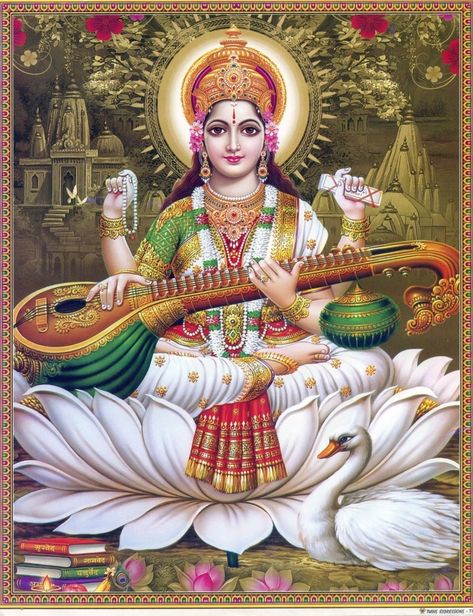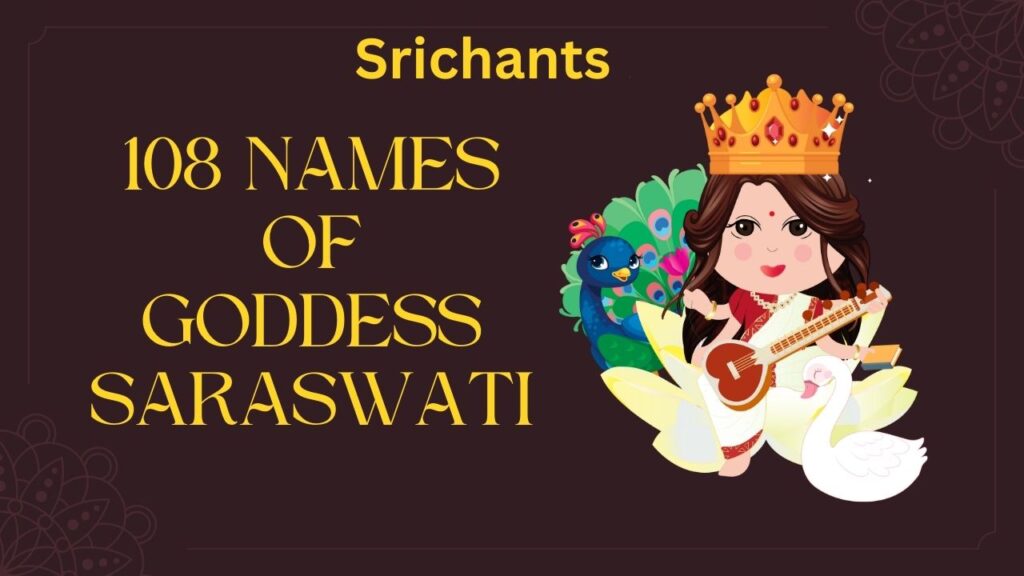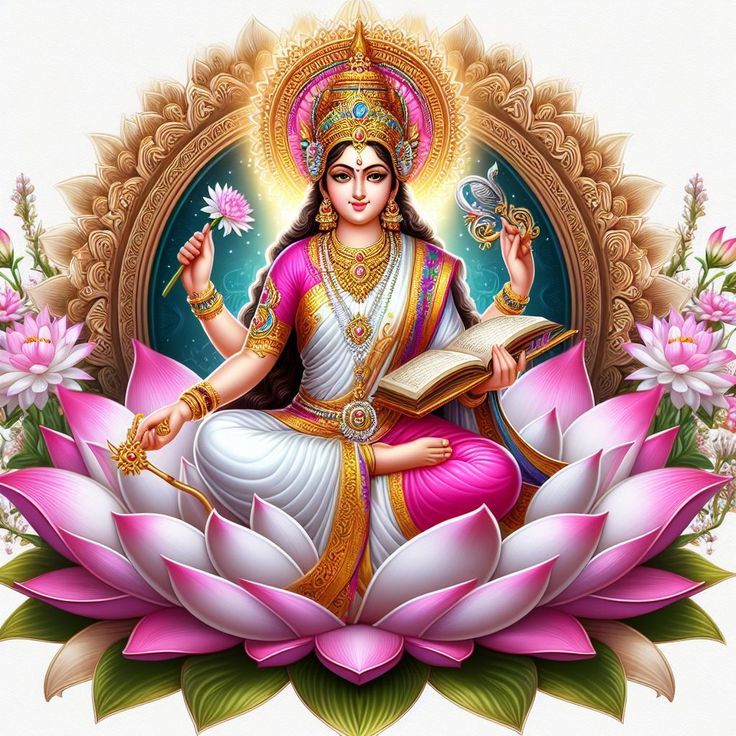Upanishads: Saraswati Upanishad importance today
Introduction
Respected for their great insight into the nature of reality, the human predicament, and the divine, the ancient Hindu writings known as the Upanishads Among this enormous body of philosophical and spiritual knowledge, a less-known Upanishad—the Saraswati-Rahasya Upanishad—shines a focus on the respect and relevance of the goddess Saraswati. This paper explores the several facets of Saraswati’s divine nature and the transforming power of her blessings, therefore delving deeply into the lessons of this Upanishad.
The Saraswati-Rahasya Upanishad’s Historical Context
Considered to have evolved during the Middle Ages, the Saraswati-Rahasya Upanishad reflects the ongoing respect for the goddess Saraswati inside the larger Hindu tradition. Inspired by the Vedic and Tantric lineages, this Upanishad presents an original viewpoint on the devotion and spiritual relevance of the goddess of knowledge, study, and the arts.

Saraswati: Embodiment of Divine Knowledge
The great awareness of Saraswati as the incarnation of heavenly wisdom, creativity, and the ultimate truth drives the Saraswati-Rahasya Upanishad from its core. The Upanishad presents Saraswati as the highest sovereign, Brahman’s non-dual potency, and the core of Vedantic knowledge. Her nature is said to be the root of all language, speech, and intellectual interests; so, she is the indispensible inspiration for those on a quest of knowledge and spiritual illumination.
Saraswati’s Iconography and Symbolic Illustrations
Deeply exploring the complex symbolism and iconography connected with the goddess Saraswati, the Saraswati-Rahasya Upanishad Her qualities, including the book, the white swan, and the veena—musical instrument—have great spiritual resonance. Connecting the material and the spiritual domains, the Upanishad reveals the symbolic images of Saraswati as doors to great truths.

Worship of Saraswati: Mantras, Customs, and Spiritual Activities
The Saraswati-Rahasya Upanishad offers thorough direction on how to honor and call upon the goddess Saraswati. Along with its unique seers, meters, and symbolic meaning, it offers certain mantras including the “pra no devi,” “a no divi,” “pavaka nah,” “chodayiri,” “maho arnah,” “chatvari vak,” “yadvak,” “devim vacham,” and “ambitame.” By means of Saraswati’s blessings, these mantras are supposed to improve one’s intellectual capacity, creativity, and spiritual development.
The Importance of Learning and Education inside the Upanishad
The Saraswati-Rahasya Upanishad stresses in human existence the great relevance of education, learning, and the search of knowledge. It emphasizes Saraswati’s function as the defender of ideas, the motivator of honest language, and the awakener of moral minds. Under the direction of the goddess, the Upanishad exhorts people to pursue philosophical questions, creative expression, and spiritual wisdom acquisition.
Saraswati’s Concerning the Divine Triad
The Saraswati-Rahasya Upanishad explores the complex link among Saraswati and the divine trinity of Brahma, Vishnu, and Shiva. It says Saraswati is the wife of Brahma, the creator, and the one bestowing gifts upon the other gods. Saraswati is also shown in the Upanishad as the inner controller living inside the forms of Rudra, the Sun, and other celestial expressions.

The transforming authority of Saraswati’s blessings
Emphasizing the transforming power of Saraswati’s blessings in the spheres of knowledge, artistic expression, and spiritual enlightenment, the Saraswati-Rahasya Upanishad Those who honor and love the goddess with faith and dedication will be blessed with the gift of perfect poetry, intellectual ability, and the awareness of the ultimate truth.
Ideas of Consciousness and Meditation in the Upanishad
The Saraswati-Rahasya Upanishad explores the nature of awareness as well as the several phases of meditation. It describes the dual concentration—with and without elements—that one can practice inside the heart as well as in outside objects. The Upanishad exhorders the seeker to live in the joyful experience of the Supreme Self and to go beyond the duality of name and form.
Reveals of Saraswati on the Nature of Reality
The goddess Saraswati herself is presented in the Saraswati-Rahasya Upanishad as the revealer of deep understanding of the nature of reality. She clarifies the interaction of Brahman, Prakriti (nature), and the personal soul, sometimes known as the jiva. Saraswati’s lessons clarify the false character of the world, the function of Maya (cosmic illusion), and the final awareness of one’s actual, non-dual nature.

Relevance of the Upanishads for Modern Times
Though not very well-known, the Saraswati-Rahasya Upanishad provides priceless insights that appeal to the contemporary seeker. The Upanishad’s emphasis on the devotion and respect of Saraswati provides a timeless direction in a society more and more preoccupied with the search of knowledge, artistic expression, and spiritual development. Its lessons on the transforming potential of wisdom, the value of education, and the awareness of one’s actual nature still inspire and uplifting people on their spiritual paths.
Conclusion
A treasure store of Hindu knowledge, the Saraswati-Rahasya Upanishad clarifies the great relevance of the goddess Saraswati in the intellectual and spiritual spheres. This article has sought to expose the mystical wisdom at the core of this lesser-known literature by means of an exploration of the Upanishad’s teachings on Saraswati’s divine character, her iconography, the related rites and mantras, and the insights into the nature of reality. The Saraswati-Rahasya Upanishad is evidence of the Hindu tradition’s ongoing significance as seekers of knowledge, creativity, and spiritual enlightenment keep to the goddess Saraswati for direction and blessings.
#Upanishads #saraswatiupanishad #upanishad #veda #upanishadveda #katha #Upanishad #kathaUpanishad







